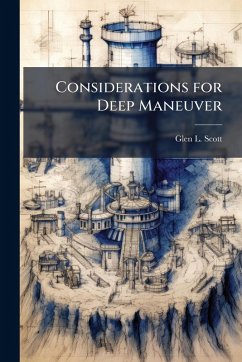
Art and Science of Operational Maneuver
Versandkostenfrei!
Versandfertig in über 4 Wochen
15,99 €
inkl. MwSt.
Weitere Ausgaben:

PAYBACK Punkte
8 °P sammeln!
This monograph examines the concept of operational maneuver from a theoretical and historical perspective. It suggests a framework for the development of operational maneuver concepts. The monograph first defines the terminology associated with operational maneuver. Movement, mobility, and maneuver are distinct concepts which form the basis for understanding operational maneuver. Next, the monograph examines operational maneuver theory in terms of leverage, concentration, and risk. These elements form a framework which facilitates the design of operational maneuver concepts early in a campaign...
This monograph examines the concept of operational maneuver from a theoretical and historical perspective. It suggests a framework for the development of operational maneuver concepts. The monograph first defines the terminology associated with operational maneuver. Movement, mobility, and maneuver are distinct concepts which form the basis for understanding operational maneuver. Next, the monograph examines operational maneuver theory in terms of leverage, concentration, and risk. These elements form a framework which facilitates the design of operational maneuver concepts early in a campaign. The subsequent examination of several historical examples, both successful and unsuccessful, illustrates the applicability of the suggested framework. Operational commanders who developed viable concepts early and appreciated the elements of the framework achieved decisive results. Finally, two implications for current U.S. doctrine emerge. First, operational maneuver theory must be articulated to and understood by leaders at all levels. Secondly, operational commanders must exercise the theory to develop a capability which is essential on the Airland battlefield. This work has been selected by scholars as being culturally important, and is part of the knowledge base of civilization as we know it. This work was reproduced from the original artifact, and remains as true to the original work as possible. Therefore, you will see the original copyright references, library stamps (as most of these works have been housed in our most important libraries around the world), and other notations in the work. This work is in the public domain in the United States of America, and possibly other nations. Within the United States, you may freely copy and distribute this work, as no entity (individual or corporate) has a copyright on the body of the work. As a reproduction of a historical artifact, this work may contain missing or blurred pages, poor pictures, errant marks, etc. Scholars believe, and we concur, that this work is important enough to be preserved, reproduced, and made generally available to the public. We appreciate your support of the preservation process, and thank you for being an important part of keeping this knowledge alive and relevant.












